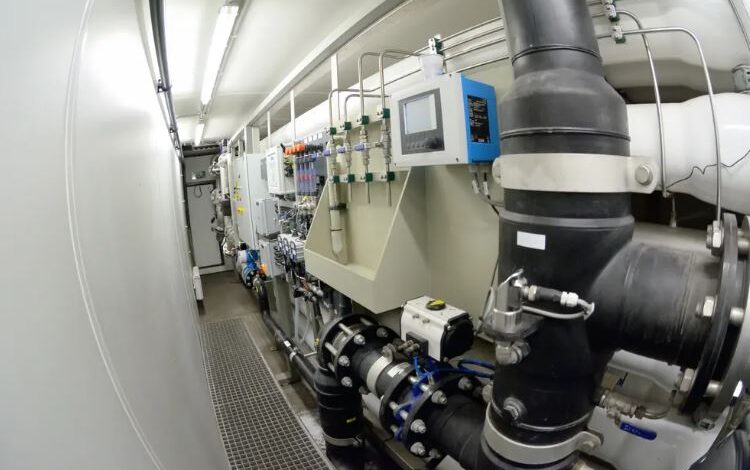How do you desalinate water with 90% less energy?
Before, it was not clear how to desalinate water without ion exchange membranes and with little electricity
(sustainabilityenvironment.com) – How do you desalinate water without spending too much energy? The question is one million dollars, because today these process requires filtration or evaporation to separate unwanted elements such as sodium, chloride and organic matter.
A group of researchers from the Beckman Institute for Advanced Science and Technology (University of Illinois) found an answer. The process successfully tested is that of electrodialysis, that is, a splitting of water that creates a positively charged proton and a negatively charged hydroxide. Because the constituent elements of salt have their own charges, splitting forces the movement of the mineral in a designated direction. All this, however, as a rule, requires high energy expenditure.
Electrodialysis then uses ion exchange membranes, which, however, are one of the most expensive components of electrodialysis, because they require maintenance and frequent replacement.
Faced with these two obstacles, researchers were able to find a solution that lowers energy and economic costs. They performed different electrodialysis from the traditional one, simplifying the process of salt separation through an oxydoriduction.
It is a reaction that combines a reduction (that is, the addition of electrons to create a negative charge) and an oxidation (that is, the subtraction of electrons to create a positive charge). Physically, this happens by adding a special polymer-based material to the wastewater before it is filtered and purified.
The result? A success. Instead of dividing water molecules into positively and negatively charged sectors to pull out the salt, the redox reaction changes the charge of the entire water molecule in one go. It does this by achieving the same degree of separation but employing about 90% less energy. The low consumption means that the process could work well even in the case of inputs provided by photovoltaics.
read also In Sardinia arrives WEPA, hybrid marine plant that exploits wind, sun and waves
In addition to improving energy efficiency, the team of scientists also eliminated some of the economic costs. The team replaced traditional ion exchange membranes with nanofiltration membranes that were more robust and less expensive. The process was tested on a wastewater treatment plant in the region. The experiment showed that this sui generis electrodialysis can successfully purify wastewater. The next steps will be the application to salt and brackish water sources, such as groundwater and rivers.






